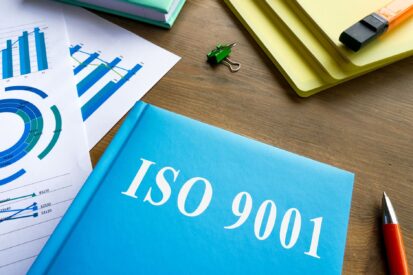For many Australian businesses, adopting internationally recognised standards such as ISO 27001 (Information Security Management System) and ISO 9001 (Quality Management System) represents a commitment to continuous improvement, risk mitigation, and customer satisfaction. While seemingly distinct in their focus areas, these two standards bear many similarities in their approach to management systems and share a common goal towards enhancing operational efficiency and achieving business objectives.
When implemented concurrently or systematically integrated, ISO 27001 and ISO 9001 management systems can unlock numerous synergies, streamlining processes and empowering businesses to extract even greater value from these certifications. In this detailed blog post, we will explore the opportunities and benefits of integrating ISO 27001 and ISO 9001 management systems within your Australian organisation. We will provide practical guidance on the steps necessary to achieve a cohesive and harmonised framework that balances information security and quality management, ensuring both standards seamlessly complement and strengthen one another.
By capitalising on these corresponding standards, your Australian business can establish a unified management system that drives continuous improvement and growth, bolstering your information security posture and adhering to world-class quality standards. Facilitating this integration process will not only consolidate your organisation’s resources and mitigate potential duplication of efforts but also enable you to consistently deliver exceptional value to your customers and stakeholders in an increasingly competitive and security-centric business landscape.
Understanding the Synergies Between ISO 27001 and ISO 9001
At first glance, ISO 27001 and ISO 9001 may appear to have distinct objectives—with the former focusing on information security management and the latter on quality management. However, both standards share a common management systems approach based on the Plan-Do-Check-Act (PDCA) cycle and are designed to be compatible. The following are some of the key synergies between these two management systems:
- Risk-based Approach: Both standards emphasise risk assessment and management’s importance in achieving their respective objectives.
- Process Orientation: ISO 27001 and ISO 9001 both advocate a process-oriented approach to management systems, ensuring a systematic and structured framework for achieving desired outcomes.
- Continuous Improvement: Both standards encourage ongoing evaluation and enhancement of processes, enabling organisations to optimise their performance consistently.
Benefits of Integrating ISO 27001 and ISO 9001 Management Systems
By aligning and integrating these complementary standards, your Australian business can derive several benefits and unlock additional value across your organisation. Some of the key benefits of integrating ISO 27001 and ISO 9001 management systems include:
- Streamlined Processes: Harmonising the processes and procedures within your management systems can eliminate redundancies and increase efficiency, simplifying your organisation’s operations and reducing administrative burden.
- Enhanced Risk Management: By combining the risk management elements of both standards, your business can achieve a more comprehensive and robust risk management framework, ensuring you address both quality and information security risks in a cohesive manner.
- Consolidated Auditing: Integrated management systems can facilitate a unified internal and external audit process, reducing the time and resources required for maintaining your certifications.
- Holistic Approach to Business Excellence: Integrating ISO 27001 and ISO 9001 enables your business to adopt a more holistic and comprehensive approach to continuous improvement, promoting excellence across all aspects of your organisation—from information security to customer satisfaction.
Steps to Achieve Integration of ISO 27001 and ISO 9001 Management Systems
Integrating ISO 27001 and ISO 9001 management systems within your Australian organisation involves a systematic and structured approach. The following steps can guide your journey towards achieving an integrated management system:
- Conduct a Gap Analysis: Assess your existing management systems to identify areas of overlap and potential gaps and discrepancies that may need to be addressed during the integration process.
- Define Integration Objectives: Establish clear objectives for your integrated management system, outlining the desired outcomes, benefits, and performance indicators you aim to achieve.
- Align Processes and Procedures: Review and harmonise the processes and procedures within your management systems, ensuring consistency in documentation, risk management, internal audits, and management reviews.
- Train and engage your workforce: Ensure your employees are well-versed in the integrated management system, providing training and resources to support their understanding and active participation in both ISO 27001 and ISO 9001 processes.
- Monitor and Evolve Your Integrated System: Regularly evaluate the performance and effectiveness of your integrated management system, refining processes and procedures as needed to ensure continuous improvement and alignment with your business objectives.
Leveraging Expert Support for a Successful Integration Process
As with any significant organisational change, integrating ISO 27001 and ISO 9001 management systems can pose challenges. Engaging the support of experienced ISO consultants can provide invaluable guidance and assistance in navigating the integration process, ensuring a smooth and successful transition to an integrated management system that delivers consistent value for your Australian business.
By partnering with ISO consultants, your organisation can benefit from expert insights, tailored advice, and proven methodologies to streamline your efforts and maximise the effectiveness of your integrated management system.
Embracing the Power of Integrated Management Systems in Australian Businesses
Recognising the synergies between ISO 27001 and ISO 9001 and integrating these management systems can substantially benefit your Australian business, enabling you to capitalise on a unified approach to information security and quality management. Achieving an integrated management system not only streamlines your organisation’s processes and enhances risk management capabilities, but also demonstrates your commitment to continuous improvement and business excellence in today’s competitive market.
To further support your journey towards integrating ISO 27001 and ISO 9001 management systems, consider partnering with a professional ISO consultancy service provider like ISO 9001 Consultants. Their expertise, tailored solutions, and industry knowledge can prove invaluable in guiding your business towards achieving an optimised and harmonised framework that delivers exceptional value to your customers and stakeholders alike.







